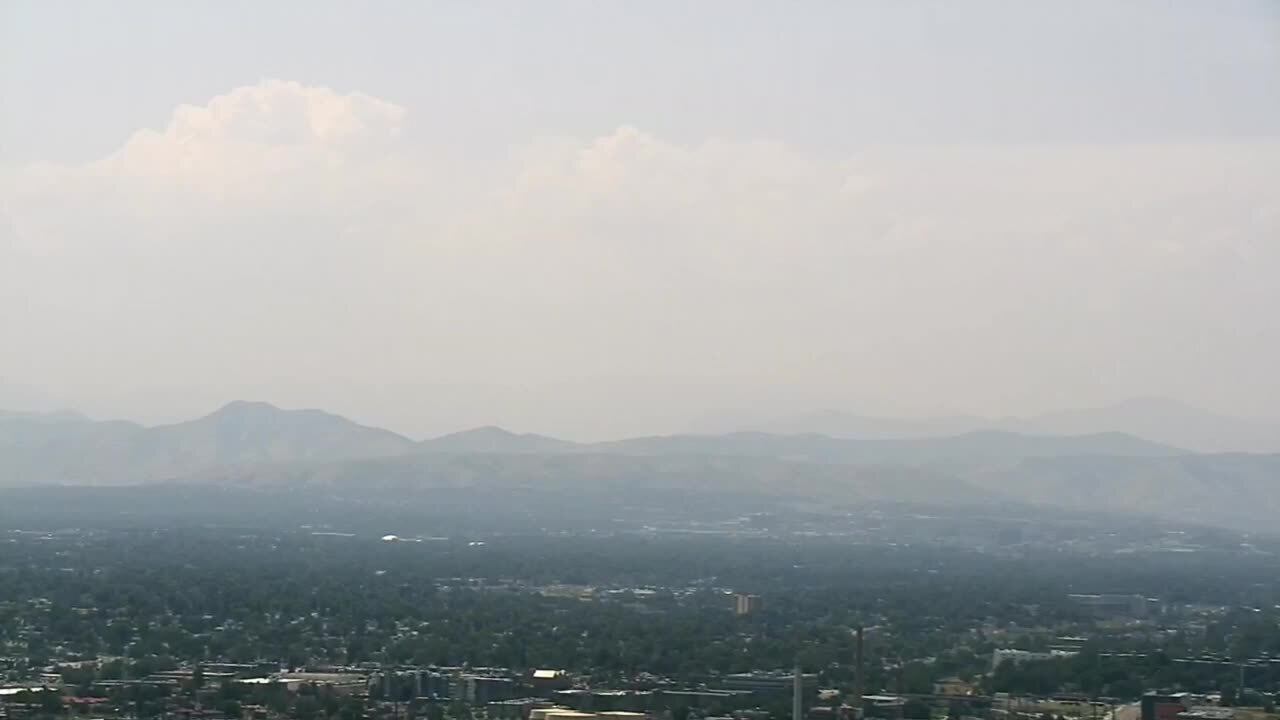DENVER – The Denver metro area is under another Ozone Action Day Alert Tuesday for poor air quality due to ozone levels and smoke from wildfires in the West, which meteorologists say could become more of the norm in years to come.
For more than a week, the Front Range has seen above-normal ozone and particulate matter levels in its air – stemming both from large wildfires burning across Colorado and the western U.S. and from the Front Range’s already poor air quality levels.
Both ozone and particulate matter were in the moderate range Tuesday afternoon along the Front Range, meaning unusually sensitive people should consider not being outside for long or limiting their physical exertion.
Grace Goodbarn, who coaches a field hockey camp, said the players had been carrying their water bottles around throughout practice Tuesday and that she and other coaches had been reminding them to take breaks and drink plenty of water.
“We took two, 15-minute breaks in between. Right now, we have five-minute breaks in between switching groups and stations,” she said. “…I think it’s definitely concerning when you kind of look out there.”
The smoke from Western wildfires, particularly a few large ones burning in Oregon, California, Washington and Montana, has spread across most of the northern U.S. this week, including Colorado.

Kelly Eskew, a nurse practitioner with Aspire Allergy & Sinus, said the clinic had seen more patients in recent days experiencing nasal congestion and burning in their eyes and throat, and said the fine particulate matter and smoke particles were the main components affecting people.
“Often, they feel sick. But it’s really just either their baseline of allergy or sinus issues are worsening from the smoke,” Eskew said.
She recommends that people experiencing symptoms due to the poor air quality use sinus rinses twice a day and decongestants.
Paul Schlatter, the Sciences and Operations Officer for the National Weather Service in Boulder, explained how a high pressure system was causing the smoke and pollutants to linger. The smoke remains aloft and reduces visibility to about 5-6 miles, while the ground visibility remains 10-15 miles.
“The air is sinking toward the ground. It traps whatever pollutants are out there, traps them near the surface. So, air quality gets really bad. Visibility, it’s really hazy; poor visibility. And it’s just not a fun time to be outside when there’s so many pollutants out there,” he said.
He said that wind and possible precipitation moving in this week could improve air quality by the weekend.
Climate change has worsened the drought across the West this year and led to drought conditions that are the worst in at least 20 years. That has led to more wildfires that have been more intense, which have blanketed the West in smoke for the past several weeks.
Schlatter said that smoky western skies will likely become the new normal as climate change continues.
“I would say, yes, prepare for this to be a new normal. And all of it is because of those fires across the western U.S.,” Schlatter said. “We’ve already seen a major increase in size and intensity of fires. This year is no different. Gigantic fires across the Pacific Northwest, and with the airflow pattern aloft, it’s bringing that smoke into Colorado. That’s not helping things at all.”
Denver7's Jason Gruenauer and Liz Gelardi contributed to this report.









